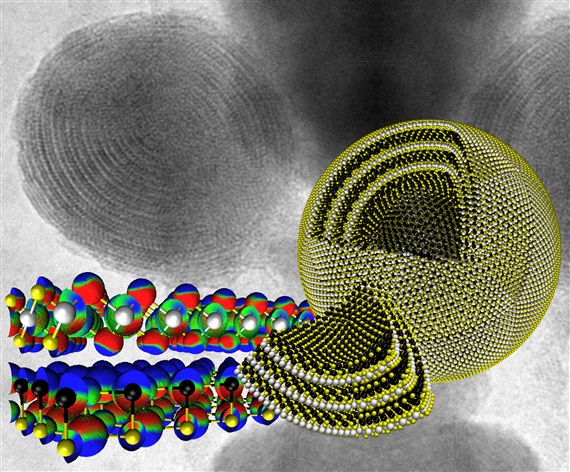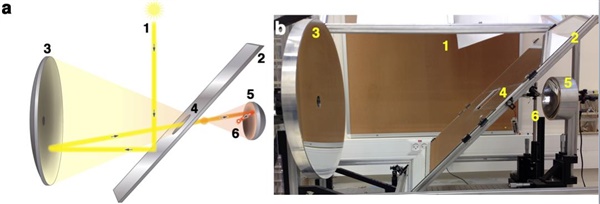Research on a fundamentally new and unprecedented molecular closed-cage nanostructure, produced by immensely concentrated sunlight, was published recently by a team comprising a collaboration among BGU Professors Jeffrey Gordon and Daniel Feuermann of the Alexandre Yersin Department of Solar Energy and Environmental Physics (YDSEEP) at the Jacob Blaustein Institutes for Desert Research, Prof. Reshef Tenne’s group at the Weizmann Institute of Science, and Dr. Andrey Enyashin at the Ural Federal University in Russia, in the latest issue of one of the foremost journals in nanotechnology, ACS Nano.
Closed-cage molecular structures of nanometer dimensions have been realized for years – starting with pure carbon, followed by the discovery of a panorama of inorganic compounds by Reshef Tenne – and the theoretical basis for why these remarkable molecular enclosures form followed in kind. Invariably, they were found to exhibit startling and unanticipated electronic, mechanical and chemical properties.
But closed-cage nanostructures assembled from the alternate layering of different chemical compounds that, individually, would not succeed, but together, as a “misfit” superstructure, do indeed succeed, had neither been proposed nor synthesized previously. In this case, the two compounds were lead sulfide and tin sulfide.
The experimental success story ensued thanks to an advanced solar furnace designed and built by Professors Gordon and Feuermann at their lab at BGU’s Sede Boqer Campus. Highly concentrated solar radiation proved to be the key element in creating a unique reactor conducive to the synthesis of these singular misfit nanostructures. The reactor conditions subsume continuous temperatures approaching 3000°C, relatively large irradiated areas, an extensive ultra-hot annealing environment, and strong gradients in the reaction region.
Thanks to complex molecular computations contributed by Andrey Enyashin, the special role of polar forces between the different tin sulfide and lead sulfide molecular slabs was elucidated, quantified, and shown to play a key role in stabilizing misfit layered-compound superstructures, including the range of particle sizes (20 to 100 nanometers) observed in the experimental products.
These groundbreaking findings augur well for future studies in which a rich spectrum of such misfit layered nanostructures could be identified and synthesized – now being planned in concert by Reshef Tenne, Jeffrey Gordon and Daniel Feuermann.
Because of the unexpected existence of these nanostructures, it is premature to relate to exceptional properties and applications they may offer. However, the known properties of bulk lead sulfide and tin sulfide individually indicate that their misfit nanostructures could reveal interesting absorption of visible light, which could spawn applications in photo-catalysis and photo-detection.

Transmission electron microscope image of a first-ever, solar-generated, closed-cage superstructure nanoparticle comprising alternating layers of lead sulfide and tin sulfide, with a corresponding illustrative molecular model that highlights the misfit, layered-compound superstructure. To set the scale, the diameter of the closed-cage structure here is 50 nanometers.

Schematic and photo of the solar furnace in the lab of the BGU coauthors – capable of concentrating ambient solar radiation 15,000 times, and reaching reactor temperatures approaching 3000°C. Solar radiation brought into the lab from an outdoor tracking flat reflector and directed downward (1) is reflected by a tilted flat mirror (2) to a parabolic dish (3) of diameter 526 mm. A concentration boost is provided by an elliptical dish (5). The reactor ampoule is sited at the focal point (6). |
|